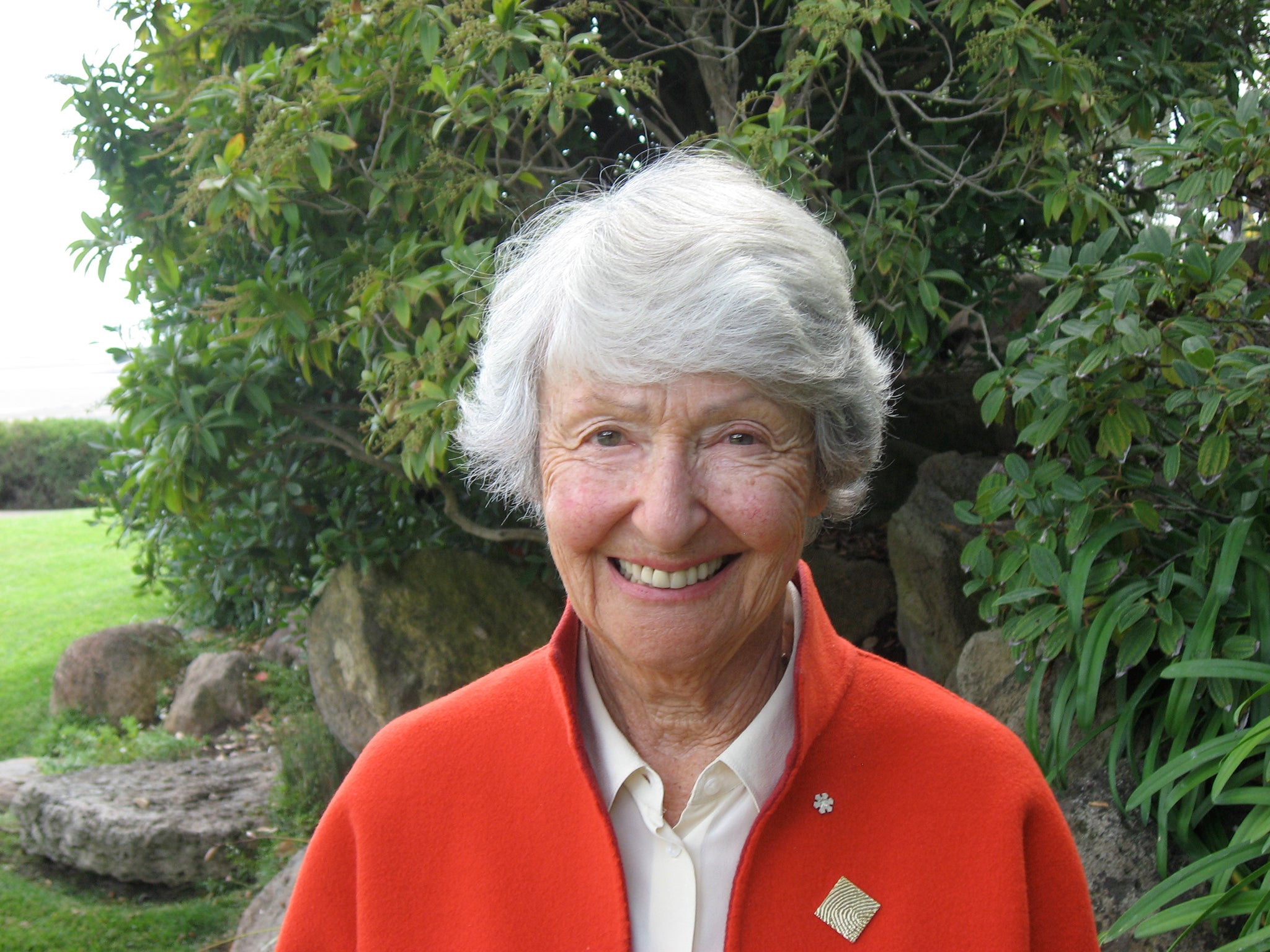Cornelia Hahn Oberlander: Landscape architect who championed green design
Oberlander believed in the power of outdoor spaces and became renowned for her innovative work

Cornelia Hahn Oberlander, a visionary Canadian landscape architect who championed sustainable and socially conscious design decades before it became a hallmark of her profession, has died aged 99.
Oberlander, who would have turned 100 later this month, was considered a role model for women in a male-dominated field and was known for forging uncommon working partnerships with architects and for being a trailblazing designer of green roofs, in which a building’s rooftop is engineered with a soil-holding infrastructure and specific plants to trap rainwater and cool the building below. She was also recognised for turning to native and ethnobotanical flora to give landscapes and their inhabitants a sense of place.
One of her most enduring collaborators was the modernist architect Arthur Erickson, with whom she helped to transform Vancouver’s downtown Robson Square, the provincial government courthouse complex, during the Seventies. About two decades later, they worked together on another landmark structure: the Canadian embassy on Pennsylvania Avenue NW in Washington.
Oberlander was one of the first women to study at Harvard’s Graduate School of Design, notes Charles Birnbaum, president and chief executive of the Cultural Landscape Foundation. “Her expansive career encompasses public housing projects beginning in the Fifties, dozens of children’s play areas in the Sixties, governmental campuses and cultural institutions, her pioneering efforts with green roofs, and her constant use of landscape architecture to address environmental and ecological issues and the impact of climate changes,” Birnbaum says. In 2019, the Washington-based foundation named its £70,000 biennial prize after Oberlander; the first recipient is due to be named this year to mark her centenary.
Oberlander, who never really retired, returned often to give walking tours of the Vancouver campus of the University of British Columbia. She worked on more than a dozen landscape projects at the university during her career, notably at the Museum of Anthropology, where she created an 11-acre landscape evoking the Indigenous Haida people and their island terrain off the coast of British Columbia.
Another signal project, Birnbaum says, was the three-block-long roof garden at Robson Square, which she designed to link Erickson’s Law Courts building to the Vancouver Art Gallery. Planted roofs, challenging to engineer, are now a common building feature to mitigate storm-water pollution and the heat island effects of cities.
Ingrained in Oberlander’s work, large and small, was the idea that everyone should have access to gardens and green spaces that nurture emotional wellbeing.
Oberlander believed children’s playgrounds should exercise the imagination as much as the body, and at the 1967 Montreal Expo, she presented the Children’s Creative Centre, where swings and slides were rejected in favour of undulating topography, pools and treehouses. This became the prototype for the approximately 70 natural playgrounds she designed, which also drew Erickson to her work.
Cornelia Hahn was born 20 June 1921 in Mulheim an der Ruhr, Germany, to Franz and Beate Hahn. Her father, an engineer, was killed in an avalanche while skiing in Switzerland in 1933.
The family moved to Berlin, where her grandparents lived, but as they were Jewish, they had to flee the Nazi regime, getting out in 1938. They landed in New York, and Beate Hahn and her three young daughters soon decamped to the tranquillity of rural New Hampshire. There, Oberlander gardened in earnest – her mother was a horticulturist – and developed a deep affinity for the land.
She attended Smith College in Northampton, Massachusetts, graduating in 1944, then enrolled at Harvard’s Graduate School of Design to study landscape architecture, graduating in 1947. While there, she met an architecture student, Peter Oberlander, whose Viennese family also had to escape Nazi persecution. They married in 1953, the year they moved to Vancouver, where her husband became a professor of planning at the University of British Columbia.
Her friend and sometimes professional collaborator, architect Eva Matsuzaki, says Oberlander always worked as a design team member. This collaborative ethos with architects and engineers brought about an unusually seamless relationship between building and landscape.
The UBC Museum of Anthropology is a classic example, where the interior’s high glass wall connects to a landscape of trees and grasses to a bay of the Pacific Ocean beyond.
“You get layers to bring back the memory of the Haida places, but with Cornelia adding her chemistry to it,” Matsuzaki says.
At The New York Times headquarters in Manhattan, Oberlander worked with architect Renzo Piano and landscape architects HMWhite to create a courtyard garden – a placid, undulating landscape of birch trees and ferns far removed emotionally, if not geographically, from the bustle of nearby Times Square.
Two of the most meaningful projects for her were the Canadian embassies in Washington and Berlin because they reconnected her to her formative years as a child in Germany and a refugee to the US, says her daughter.
Oberlander told an interviewer for Toronto’s Globe and Mail that moving from the US to Canada in the Fifties was instrumental in the type of landscape architect she became.
“The freedom to create, the freedom to think differently, was unlimited,” she said. “It was a younger country and very open to new ideas.” Among her many awards is Companion of the Order of Canada.
Her husband died in 2008. Survivors include three children, Judy, Wendy and Tim Oberlander, all of Vancouver; and four grandchildren.
Oberlander is buried in the cemetery she designed at the Vancouver synagogue where she and her husband were founding members. She included a cedar grove in her design, says her daughter Judy; “it’s beautiful.”
Cornelia Hahn Oberlander, landscape architect, born 20 June 1921, died 22 May 2021
The Washington Post

